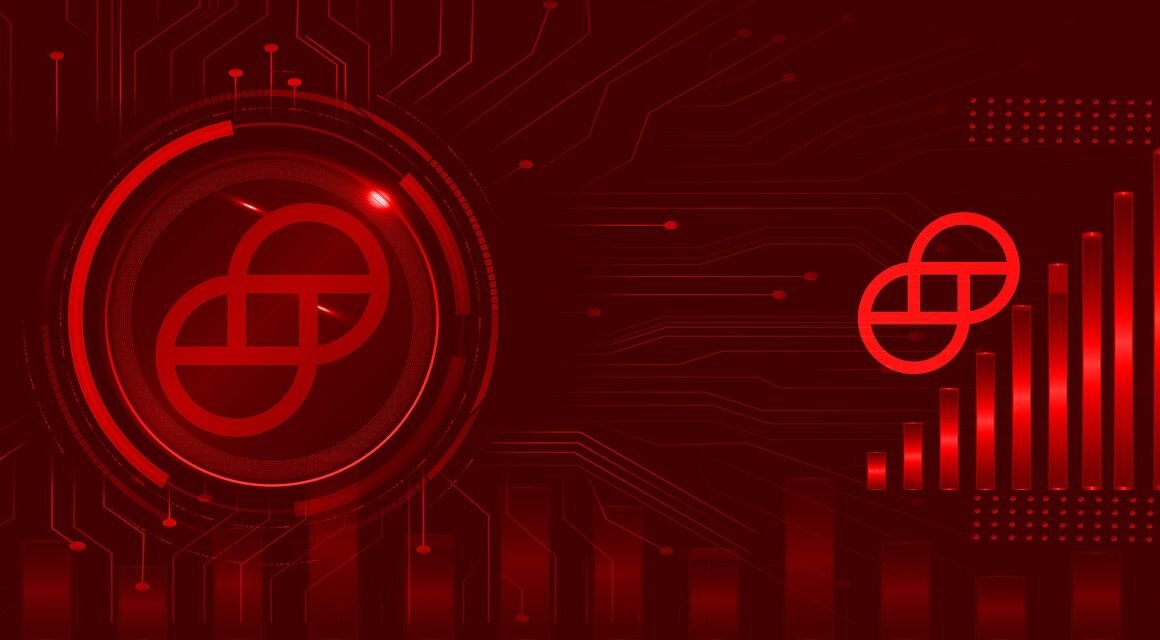Navigating the world of blockchain technology can feel like deciphering a complex code. At the heart of it all lie consensus mechanisms, the engines that drive trust and security in decentralized systems. These algorithms ensure that all participants agree on the state of the blockchain, preventing fraud and manipulation. Understanding these mechanisms is crucial for anyone interested in cryptocurrencies, decentralized finance (DeFi), and the future of decentralized technologies. Let’s dive into the fascinating world of consensus mechanisms and explore how they work.
What are Consensus Mechanisms?
Defining Consensus in a Decentralized World
Consensus mechanisms are the methods used by a blockchain network to achieve agreement on a single version of the truth. In a centralized system, a single authority dictates what is true. However, in a decentralized network, no single entity is in control. Therefore, a consensus mechanism is needed to ensure that all nodes (computers on the network) agree on which transactions are valid and in what order they occurred.
Think of it as a group of friends trying to decide where to eat dinner. Without a central authority (like a designated decision-maker), you need a process – a consensus mechanism – to arrive at a mutually acceptable choice.
Why are Consensus Mechanisms Important?
Consensus mechanisms are vital for several reasons:
- Security: They prevent malicious actors from tampering with the blockchain. By requiring agreement from a majority of the network, it becomes extremely difficult and costly for anyone to alter the transaction history.
- Trust: They foster trust among participants by ensuring that all transactions are verified and validated according to pre-defined rules.
- Decentralization: They enable decentralization by distributing the decision-making process across the network. This eliminates the need for a central authority and reduces the risk of censorship or control by a single entity.
- Fault Tolerance: Well-designed consensus mechanisms can withstand failures or errors in some parts of the network without compromising the overall integrity of the blockchain.
A Simple Analogy
Imagine a group of people writing a shared document simultaneously. Each person can suggest changes, but only changes agreed upon by a majority of the group are incorporated into the final document. The consensus mechanism is the set of rules that determines how these changes are proposed, voted on, and ultimately accepted or rejected. This ensures everyone is working with the same, accurate version of the document.
Popular Consensus Mechanisms
Proof-of-Work (PoW)
Proof-of-Work (PoW) is one of the oldest and most well-established consensus mechanisms, famously used by Bitcoin. It involves “miners” competing to solve complex mathematical problems using powerful computers. The first miner to solve the problem gets to add the next block of transactions to the blockchain and is rewarded with newly minted cryptocurrency.
- How it Works: Miners compete to solve a computationally intensive puzzle. The solution, known as a “hash,” must meet a certain criteria (difficulty) set by the network. The difficulty is adjusted periodically to maintain a consistent block creation time.
- Benefits:
Highly secure due to the significant computational power required to attack the network.
Well-tested and understood, with a long track record of reliability.
- Drawbacks:
High energy consumption due to the intensive computation.
Scalability limitations; transaction processing can be slow.
Potential for centralization if mining becomes dominated by a few large players.
Example: Bitcoin uses PoW. Its security is directly proportional to the amount of computing power securing the network. A 51% attack, where a single entity controls more than half of the network’s computing power, would be incredibly expensive and technically challenging.
Proof-of-Stake (PoS)
Proof-of-Stake (PoS) is an alternative consensus mechanism that aims to address the energy consumption and scalability issues of PoW. In PoS, validators “stake” a certain amount of their cryptocurrency to participate in the block creation process. Instead of competing to solve complex problems, validators are chosen randomly (or based on other criteria, like the amount of stake) to create the next block.
- How it Works: Validators stake their cryptocurrency, essentially locking it up to participate in the network. The protocol then chooses a validator to create the next block, often based on the amount of stake they hold (although other factors can also influence the selection). Validators who propose and validate fraudulent transactions risk losing their stake.
- Benefits:
Lower energy consumption compared to PoW.
Potentially faster transaction processing and improved scalability.
Reduced risk of centralization due to the lower barrier to entry for validators.
- Drawbacks:
Concerns about “rich get richer” scenarios, where validators with larger stakes have a disproportionate influence.
Vulnerable to “nothing at stake” attacks if validators can validate multiple conflicting blocks without penalty on every chain they validate.
Can be more complex to implement and secure than PoW.
Example: Ethereum transitioned from PoW to PoS (through “The Merge”). This significantly reduced its energy consumption and aimed to improve scalability. Cardano is another blockchain that utilizes PoS.
Delegated Proof-of-Stake (DPoS)
Delegated Proof-of-Stake (DPoS) is a variation of PoS that further enhances scalability and efficiency. In DPoS, token holders vote for a smaller number of delegates who are responsible for validating transactions and creating new blocks. These delegates are essentially elected representatives who act on behalf of the token holders.
- How it Works: Token holders vote to elect a set number of delegates (e.g., 21 delegates). These delegates are then responsible for validating transactions and producing new blocks. If a delegate performs poorly or acts maliciously, token holders can vote them out and elect a new delegate.
- Benefits:
Highly scalable and efficient, with fast transaction processing times.
More democratic governance, as token holders have the power to choose their representatives.
- Drawbacks:
Can be more centralized than other consensus mechanisms, as a small number of delegates control the network.
Vulnerable to collusion among delegates.
May not be as secure as PoW or PoS.
Example: EOS and Steem are examples of blockchains that use DPoS.
Other Consensus Mechanisms
While PoW, PoS, and DPoS are the most widely known consensus mechanisms, several other approaches exist, each with its own strengths and weaknesses:
- Proof-of-Authority (PoA): Uses a small number of trusted validators to confirm transactions. Suitable for private or permissioned blockchains.
- Proof-of-Capacity (PoC): Uses hard drive space instead of computing power. Aims to be more energy-efficient than PoW.
- Proof-of-Burn (PoB): Requires users to “burn” (permanently destroy) a certain amount of cryptocurrency to participate in the network.
- Practical Byzantine Fault Tolerance (pBFT): Designed to tolerate Byzantine faults, where some nodes in the network may be faulty or malicious. Commonly used in enterprise blockchain solutions.
Factors Influencing Consensus Mechanism Choice
Scalability, Security, and Decentralization
The choice of a consensus mechanism depends on the specific needs and priorities of the blockchain network. There’s often a trade-off between scalability, security, and decentralization. For example:
- Scalability: How many transactions can the network process per second? DPoS typically offers higher scalability than PoW.
- Security: How resistant is the network to attacks? PoW is generally considered to be the most secure consensus mechanism, but it comes at the cost of high energy consumption.
- Decentralization: How distributed is the control of the network? PoW can be more decentralized in theory, but in practice, mining can become concentrated in the hands of a few large mining pools.
Developers must carefully consider these trade-offs when selecting the most appropriate consensus mechanism for their blockchain.
Use Case and Network Requirements
The specific use case for the blockchain also plays a crucial role in determining the best consensus mechanism. For example:
- A blockchain for microtransactions might prioritize scalability over security.
- A blockchain for storing sensitive data might prioritize security over scalability.
- A permissioned blockchain for enterprise applications might prioritize efficiency and control over decentralization.
Understanding the specific requirements of the network is essential for choosing a consensus mechanism that is well-suited to its intended purpose.
Community Governance and Adoption
Ultimately, the success of any consensus mechanism depends on its adoption by the community. A well-designed mechanism that is not widely accepted by users and developers is unlikely to be successful. Community governance mechanisms can help to ensure that the consensus mechanism evolves over time to meet the changing needs of the network.
The Future of Consensus Mechanisms
Hybrid Approaches and Innovation
The field of consensus mechanisms is constantly evolving, with new and innovative approaches being developed. Hybrid approaches, which combine elements of different consensus mechanisms, are becoming increasingly popular. For example, some blockchains use a combination of PoW and PoS to achieve a balance between security and energy efficiency.
Research into new consensus mechanisms is focused on addressing the limitations of existing approaches and improving scalability, security, and decentralization.
Regulatory Considerations
As blockchain technology becomes more mainstream, regulatory bodies are starting to pay closer attention to consensus mechanisms. Regulators may have concerns about the energy consumption of PoW, the potential for centralization in PoS, and the overall security and stability of blockchain networks.
The future of consensus mechanisms will likely be shaped by regulatory considerations, as well as technological advancements and community adoption.
Conclusion
Consensus mechanisms are the backbone of any blockchain network, ensuring trust, security, and decentralization. While Proof-of-Work (PoW) and Proof-of-Stake (PoS) are the most prominent, a diverse range of alternatives exists, each designed with unique trade-offs. Selecting the right mechanism requires a deep understanding of network requirements, scalability needs, and the desired level of security. As blockchain technology continues to evolve, so too will the consensus mechanisms that underpin it, driving innovation and shaping the future of decentralized systems. Keep an eye on hybrid approaches and emerging mechanisms as the field continues to develop!



